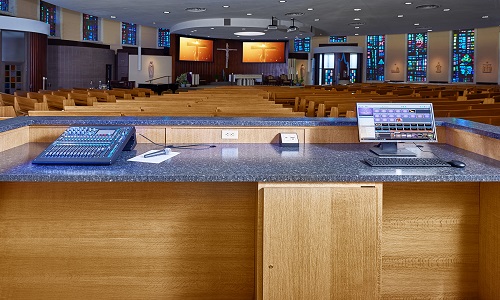You’ve just designed the perfect system for a client. You even impressed yourself with your company’s ability to design such a perfect system.
Everyone seems to be pleased — it’s a big contract for your company and your client has been chomping at the bit to add new technology to their day-to-day operations. Time to close the books on that deal and move on to the next one in a long list of backlogged projects.
However, it might be too good to be true.
As part of the contract the client signed, you have a technician routinely service the system. After a while, that technician relays back to you that the expensive system you installed is gathering dust or being grossly misused.
Did the client invest enough time to learn how to use the system? Did they clearly articulate what they were looking for?
On the other hand, did the integrator listen to those needs and develop a system that is easy to use, custom-made for the specific client and not a cookie-cutter, one-size-fits-all installation?
One side loves to blame the other, so let’s look at how we can avoid the blame game and ensure that every project is a success.
It starts at the beginning
For every project, the conversation with the client should begin with the customer clearly defining what it is they need, and the integrator should communicate how they can solve those needs.
“It starts at the beginning — trying to make sure that the system they get addresses a need, solves a problem or has a purpose,” says Steve Greenblatt, president and founder of AV software firm Control Concepts.
Does the client want to communicate more easily, enhance their business or become more efficient? Once those questions are answered, then a decision can be made on system design.
The scope of work is mission-critical, but this is where integrators can design a system that might be too complicated to use.
“This day and age, I think most younger generations are going to opt for systems that are more comfortable for them and easier to use,” Greenblatt says.
Have you designed a perfect system, or a system that’s perfect for the particular end user you’re working with?
Integrators live and breathe technology, but a lot of other people can’t figure out how to pair their phone with their car’s Bluetooth function.
However, the relationship has to continue beyond the installation to make sure everyone is getting the most of the contract.
“Most everything we do – unless it’s very simple — has the opportunity to have further support to enhance the user experience,” Greenblatt says.
Don’t make assumptions or play the blame game
The end user will almost never have the same level of knowledge about the AV systems they want you install as you do.
“We as integrators sometimes forget that people using these systems are not experts even though we think they should be,” says Scott Wright of Wisconsin-based Lifeline Audio Video Technologies.
Other times, people are forced into the position of using the system even though they didn’t volunteer and don’t have training.
For example, a school’s music director may be told they’re now in charge of the new sound system in the auditorium. That assumption that they must know how to operate a sound board might be a major reach.
“When you become a band director, you don’t take three courses on how to run a 48-channel mixing board,” says Wright.
Read Next: Tech End Users Know More About AV Systems Than Integrators Think They Do
Lifeline, like many other integrators, offers training on these technologies at install and offers yearly training as an option in maintenance contracts, but what if that person leaves that position in a few months? Is the replacement as tech-savvy as the person in charge before?
“You can go ahead and have somebody buy a new computer and set it up on my desk and show me where the icons are,” Wright says. “ But if you do that to my mom, she has no idea what Microsoft Word is.”
Further, AV installers have to be of the mind that every project is different, no matter how similar it may seen on the surface.
“You can’t assume a system is going to be the same because you were successful in once space,” Wright said.
The user experience is fundamental
Do you remember using your first iPhone or Android? Nobody needed a course or training on how to use the new devices.
“People were literally handed an iPhone and intuitively poked around and got to where they needed to get to,” says Julian Phillips, executive vice president at Whitlock.
Those devices were built with the customer experience as one of the most important elements. AV integrators should think the same way.
“The user experience should be as simple as, “One touch to join, one touch to make things happen,’” says Phillips.
Adoption services like instructional guides and training are of course important and a must for most projects. Sometimes, a client is urged to nominate an executive or management to take ownership of a system to make sure everyone is trained on the technology.
However, that training is evolving from more than just how to make the systems work.
“It’s now how to facilitate a meeting and bring in all the different elements, content and sharing to effectively create a more collaborative meeting,” Phillips says.
However, the dynamic between integrators and client is quickly changing. The days of integrators responding to an RFP and supplying exactly what the client asks for are ending in favor of a more collaborative conversation where the technology experts take the wheel.
“It’s a pushback on integrators and customers as well,” Phillips says. “They have to challenge themselves to break out of those old silos.”










